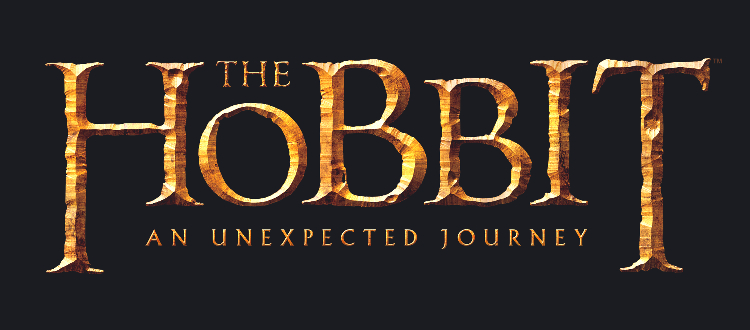
The Hobbit: An Unexpected Journey is the first film in a new trilogy directed by Peter Jackson. The films are set in Middle-Earth, like Jackson’s breath-taking Lord of the Rings series (The Fellowship of the Ring, The Two Towers, and The Return of the King), and the Hobbit films are Lord of the Rings prequels.
Whereas the Lord of the Rings films were adapted from three substantial novels, the three Hobbit films are all based on a single 300-page book, and are padded out with additional material. Jackson clearly sees The Hobbit as an epic equal to The Lord of the Rings, though that’s not how J.R.R. Tolkien envisioned it. Harry Potter and the Deathly Hallows was split into two parts to prolong the franchise for an additional year, so the studio was presumably delighted to stretch The Hobbit into a trilogy.
There are cameos from some of the Lord of the Rings cast, notably Andy Serkis playing Gollum, though Ian McKellen as Gandalf is the only returning member of the original Fellowship. The Fellowship’s replacements, a band of dwarves, are mostly unremarkable. The dwarf leader is a pale imitation of Aragorn from Lord of the Rings. Martin Freeman, in the lead role as a young Bilbo Baggins, gives an understated, naturalistic performance that’s unlike the rest of the cast. The highlight comes when Bilbo meets Gollum, in an extended two-hander sequence that recaptures some of the Lord of the Rings magic.
The film is most interesting as a technical experiment: it was filmed at forty-eight frames-per-second (known as HFR, or High Frame Rate), twice as fast as the regular frame rate. The faster frame rate eliminates the judder caused by camera panning, and it also produces impressive detail and clarity in the projected image. Higher frame rates were previously attempted by Douglas Trumbull in his ShowScan process, though the technique had never been used for a commercial film until The Hobbit.
The HFR effect is similar to high-definition television, and therefore appears less cinematic. Also, the extra clarity exposes the artificiality of the sets, props, and visual effects. (And there is much more CGI than in The Lord of the Rings.) The sets look like sets; thus, instead of immersing us, as Jackson intended, the forty-eight frames-per-second distance the viewer.
An Unexpected Journey was filmed in HFR 3D, though it’s also screening in 3D, 4DX, IMAX DMX, IMAX DMX 3D, and HFR IMAX DMX 3D versions. If you’re lucky, you can also find it in regular 35mm.
Whereas the Lord of the Rings films were adapted from three substantial novels, the three Hobbit films are all based on a single 300-page book, and are padded out with additional material. Jackson clearly sees The Hobbit as an epic equal to The Lord of the Rings, though that’s not how J.R.R. Tolkien envisioned it. Harry Potter and the Deathly Hallows was split into two parts to prolong the franchise for an additional year, so the studio was presumably delighted to stretch The Hobbit into a trilogy.
There are cameos from some of the Lord of the Rings cast, notably Andy Serkis playing Gollum, though Ian McKellen as Gandalf is the only returning member of the original Fellowship. The Fellowship’s replacements, a band of dwarves, are mostly unremarkable. The dwarf leader is a pale imitation of Aragorn from Lord of the Rings. Martin Freeman, in the lead role as a young Bilbo Baggins, gives an understated, naturalistic performance that’s unlike the rest of the cast. The highlight comes when Bilbo meets Gollum, in an extended two-hander sequence that recaptures some of the Lord of the Rings magic.
The film is most interesting as a technical experiment: it was filmed at forty-eight frames-per-second (known as HFR, or High Frame Rate), twice as fast as the regular frame rate. The faster frame rate eliminates the judder caused by camera panning, and it also produces impressive detail and clarity in the projected image. Higher frame rates were previously attempted by Douglas Trumbull in his ShowScan process, though the technique had never been used for a commercial film until The Hobbit.
The HFR effect is similar to high-definition television, and therefore appears less cinematic. Also, the extra clarity exposes the artificiality of the sets, props, and visual effects. (And there is much more CGI than in The Lord of the Rings.) The sets look like sets; thus, instead of immersing us, as Jackson intended, the forty-eight frames-per-second distance the viewer.
An Unexpected Journey was filmed in HFR 3D, though it’s also screening in 3D, 4DX, IMAX DMX, IMAX DMX 3D, and HFR IMAX DMX 3D versions. If you’re lucky, you can also find it in regular 35mm.
